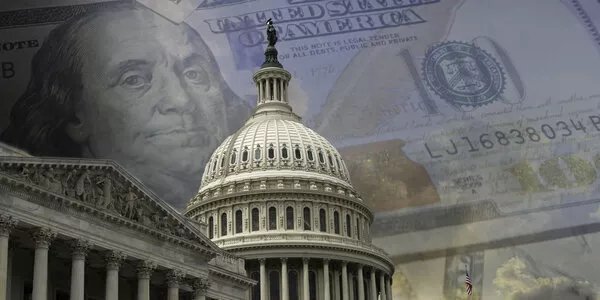
Weekly Update - Weekly update - The stickiness property of inflation
U.S. inflation figures for August caused further market turbulences. Investors were expecting a more pronounced decline in price pressures, in the wake of lower U.S. energy prices and a lull in production line tensions. This was without taking into account the phenomenon of price "stickiness", a concept studied in economics textbooks about an era thought to be over. Due to this stickiness property of inflation, the Federal Reserve could go further in its tightening as early as next week.
U.S. inflation struggling to come down.
August's inflation disappointed, with prices rising again over the month. The sharp drop in energy prices (-10% over the month) was more than offset by price increases in other categories of goods and services. The cost of housing (rents and similar), which accounts for nearly a third of household spending, rose in particular (0.7% over the month). Over one year, total inflation thus decreased slightly to 8.3% (after 8.5% in July), but core inflation - i.e. excluding energy and food prices – continued to rise to 6.3% (after 5.9%, see graph 1).
Inflation will take time to come down.
The very sharp rise in inflation from 2021 onwards has two main explanations: (1) strong demand for goods (supported by very accommodating policies) in the face of production chains in difficulty due to the health constraints linked to the COVID and (2) post-covid tensions on energy prices, exacerbated by the war in Ukraine. Both of these causes are clearing up. First, the consumption distortion in favour of goods is gradually moderating, while production chains are normalizing. And on the energy side, while tensions remain very high in Europe, prices are falling in the US. However, the shock to prices has finally proved to be so large and long-lasting that it is gradually spreading to the whole economy, leading to the phenomenon of “stickiness” in inflation. First of all, the tensions are spreading to all goods and services, including those not directly affected in 2021. The prices of services, which represent 61% of the American consumer basket, are now rising well above the central bank's comfort zone. In addition, the labour market remains very tight, with a still very large gap between the number of job openings and the number of jobs actually filled (see chart 2). And wage pressures are rising, at nearly 7% year-on-year, reinforcing the idea of inflation viscosity, with the setting up of a price-wage loop. All in all, inflation should continue to moderate gradually in the US, but this stickiness will mean that the return to 2% will take time.
Markets reassess the Federal Reserve's policy.
Investors have once again raised their expectations for a tightening of monetary policy. Markets now expect policy rates to be around 4.25%-4.5% by early 2023, a substantial increase from the current level of 2.5%. The Federal Reserve's meeting on September 21-22 will be closely watched.
Also, in the main events of the week, we chose to talk about the debt of emerging countries and the european measures against the energy crisis.





